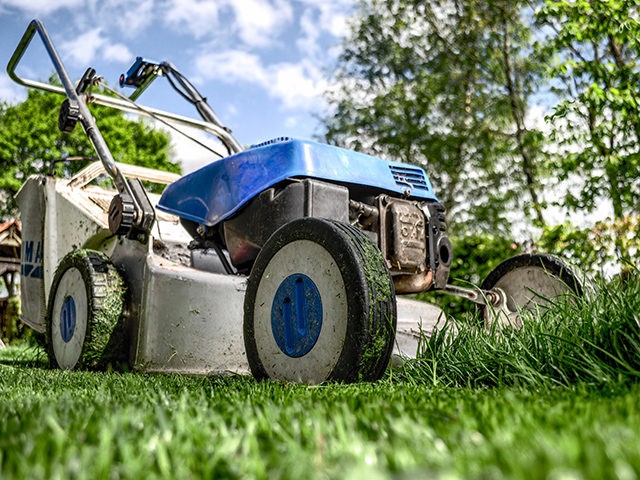While most Americans are spending time this summer enjoying the sun in the comfort of their houses’ yards, the New York Times is out with a new exposé on how lawn care is problematic, once viewed through the lens of social justice.
Lawns are contributing to pollution and climate change, asserts narrator David Botti, and their origins are far from woke, in a seven-minute video on the history of American lawns.
Botti says lawns are part of the “colonizing of America,” which transformed the landscape from “pristine wilderness” to “identical rows of manicured nature.”
“These lawns come on the backs of slaves,” he continues, zooming in on a painting of George Washington in a field to highlight men cutting the grass with scythes. “It’s grueling, endless work.”
“By the 1870s we also see American culture slowly start to embrace lawns for the privileged masses,” he states.
The video explains that the perfect lawn is associated with being a model citizen, how the first sprinkler was invented in 1871, and about the advent of “so-called trade cards” that “advertised the hell out of lawn and garden products.”
The Times also refers to the work of historian Ted Steinberg, who calls lawns the “outdoor expression of ’50s conformism.”
To drive home the point, he inserts vintage footage of two women being interviewed in their yards talking about how they moved to their communities to live exclusively near other white people. Neither of them says anything about desiring, having, or maintaining a lawn.
The Times refers readers to two books: Steinberg’s American Green: The Obsessive Quest for the Perfect Lawn and The Lawn: A History of an American Obsession, by Virginia Scott Jenkins.
Jenkins’ book concludes that lawns in America are status symbols, and their popularity grew due to promotion by the garden and golf industries and the federal government’s United States Department of Agriculture.
She also said that lawns “are a symbol of man’s control of, or superiority, over his environment.”
Both Steinberg and Jenkins make the case that lawns are harming the environment.
“Steinberg makes a convincing case that ‘turf hysteria” and the “giant chemical orgy’ of modern lawn care have led to water pollution and the shunning of native plants,” one review of his book says.
The Times links to a 2005 report from NASA that said there are more lawns in the United States than irrigated cornfields and attempting to quantify how much water is used keeping lawns alive in many areas of the country.
The article also includes the Times’ vintage reporting on President Theodore Roosevelt mowing his lawn in 1914.
“Col. Roosevelt refused to discuss politics today,” the article on the Times front page said and is shown in the video. “He got in a lot of good, vigorous exercise. For three hours he pushed a lawnmower out on the lawns at Sagamore Hill. And the exercise did not seem to tire him at all.”
The article and video make it clear how lawns — and the Times’ reporting — have changed over the course of history.
Follow Penny Starr on Twitter

COMMENTS
Please let us know if you're having issues with commenting.